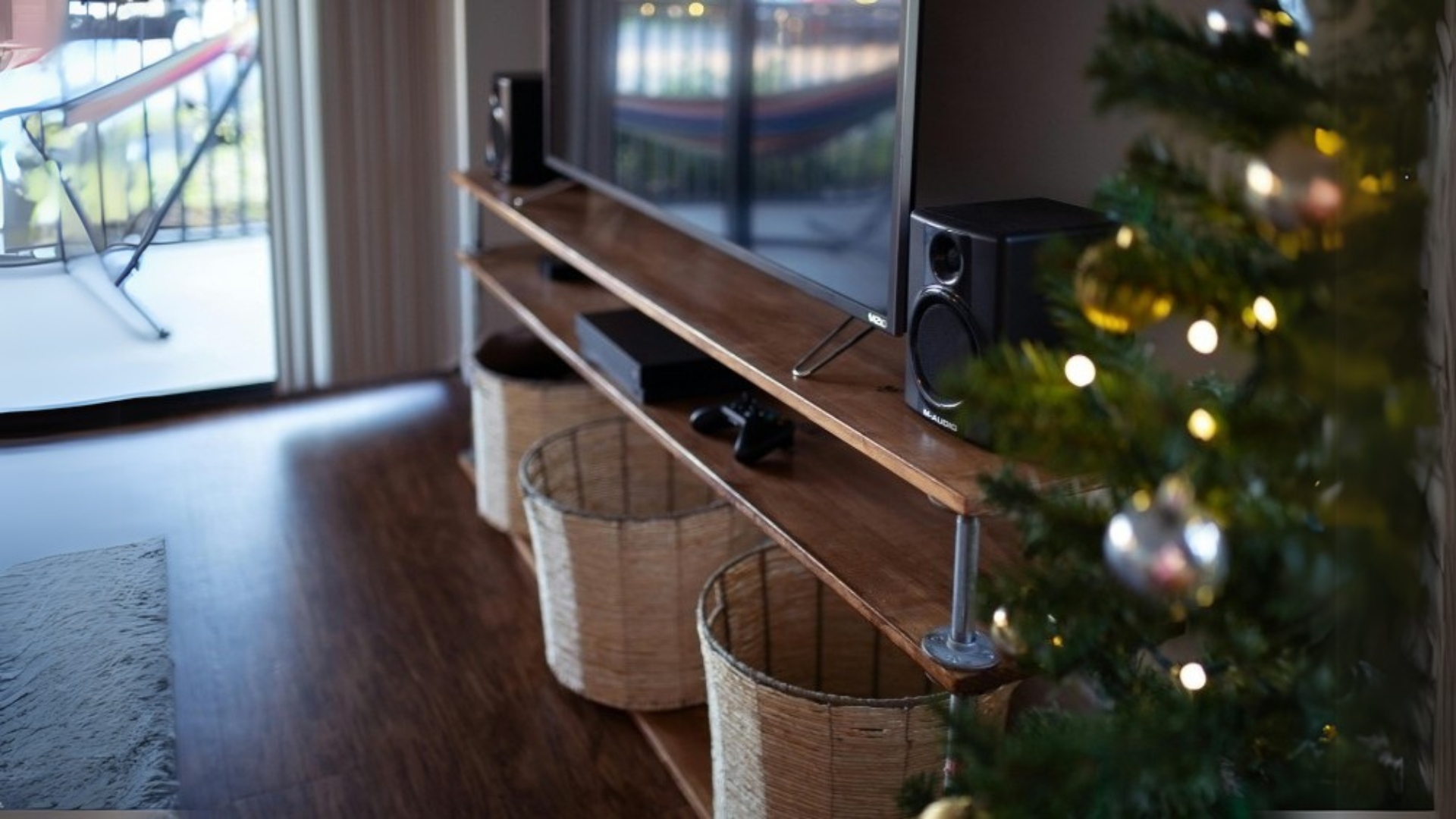It is very frustrating to not be able to enjoy the bass from your speakers because it’s vibrating all around the floor and you can’t stand it. If you have a subwoofer in your room, many ways will help isolate it from the floor so that you can enjoy your music without getting too annoyed with how much noise is coming through. In this blog post, we will discuss 5 different methods of how to isolate subwoofer from the floor.
1.Make sure the subwoofer is not touching anything:
When you have a woofer in your room, it’s really important to isolate them from everything. This includes furniture and other objects that may be around the speaker. It also means making sure there are no gaps between the floor and the bottom of the woofer.
2.Place a sheet of wood on top and attach it with screws:
If there is no way to get your speaker off the floor, you can use pieces of wood or other materials as support on either side so that the subwoofer doesn’t touch anything. You want to make sure this material is strong enough for how heavy the speaker is.
3.Put foam or rubber between the floor and the bottom of the speaker:
You can also use an acoustic isolating pad that has been made specifically for this purpose. The pads are typically placed under a subwoofer so that when it’s turned on, you get less vibration coming from inside your home.
4.Get new feet for your speakers if they are too low, and put them on a piece of wood that you can then screw into your floorboards:
If this is not an option for you, look at how high the speaker needs to be so it’s off the ground when sitting flat. Then measure how far up from the bottom of the speaker (including the height of the feet) that you need to screw in so it’s at a high enough point.
5.Use spikes instead of regular feet so that you don’t have any contact with your floors at all:
The type of flooring material will dictate what kind is best for this purpose, whether they are rubber or silicone. You might also find that the regular feet are still a better option for you.
If you can’t do that, then put felt under each foot to avoid vibrations from being transferred to your floorboards or get new feet for your speakers if they are too low. Putting them up on a piece of wood allows you to screw the speaker into the floorboards so that the speaker doesn’t come into contact with your floor and you can avoid any vibrations.
Below are six different ways to do this, with pros/cons listed for each:
– Put it on a 28″ or higher stand;
– Use felt pads under the driver feet (or something similar) – these will help isolate vibrations and also prevent scratches on your floors!
– Place an acoustic panel between the speaker cabinet and wall if you can’t move it away that far
– they’re great at absorbing reverberations which contribute to resonance
– Get some spikes! They’ll make contact with both surfaces of carpeting so there’s less chance of vibration transferring through.
– Place an acoustic panel against the wall behind it – this will help absorb reflections and also dampen resonance. Some people even recommend putting a square of foam insulation on top of the speaker
– Use rubber or cork feet under your subwoofer cabinet to prevent vibrations from being transferred through the floor!
All the steps:
To isolate a subwoofer from the ground, it is necessary to make sure that there are no connections between the flooring and the bottom of the speaker itself. It’s important not to have anything touching both surfaces so if possible, use felt or spikes to ensure that the two never meet.
Spikes are usually preferred over regular feet because they don’t have any contact with your floors at all, and it’s necessary to avoid being able to transmit vibrations for this method of isolation to be effective. If you can’t isolate the speaker from the ground then try using a piece of wood between the subwoofer and your floorboards.
Next, attach a sheet of wood to the bottom of your speakers with screws. The key is not to have any contact points between the two surfaces so make sure that you use felt or spikes for this purpose if necessary, to avoid vibrations from being transmitted through these connections.
If you’re using felt to isolate the speaker from your floorboards, make sure that it is a soft material and not rubber. Rubber transfers vibrations which defeat the purpose of isolation.
So, if you don’t want this to happen then be sure that any type of ground-protecting material will just attenuate vibrations instead of transferring them.
If your speakers are too low and you don’t want to raise the ground, you can always get new feet for these devices if they have a threaded screw hole on their bottom side. You should then attach it with screws using felt or spikes to ensure that there’s no contact between the subwoofer and your floors.
In the worst-case scenario, you can always get new spikes to avoid any contact with your floor. This will do a better job of isolating the subwoofer and it won’t transmit vibrations through these connections.
Some people might not like having something on top of their speaker because they feel that it blocks them from the sound or it ruins their aesthetic. If you have that problem, there are ways to deal with this as well. For example, if your speakers don’t block off any of your living space, then simply place a sheet of wood between them and attach it with screws on each side.
This will do a better job of isolating the subwoofer from contact with all surfaces to avoid acoustic resonance. If nothing seems like they’re working for you, try placing some foam or rubber under the bottom part of these devices to create more distance so that vibrations can be eliminated before they hit anything else (including people).
Yet another method is by putting felt pads under each foot which will also help reduce vibration transfer into floors such as hardwood, tile, or carpet.
Alternatively, you can get new feet for your speakers if they are too low and use a piece of wood to screw them in so that the pressure is not on the floor anymore. With this method, make sure there’s enough room between the bottom of it and your floorboards – otherwise, you’ll end up with a lot more resonance than before!
If things still sound shaky, then try using spikes which will eliminate contact with any surfaces such as floors. This is one way to keep an audio system isolated from any unwanted vibrations at all costs. If none of these methods work well for you though, consider investing in acoustic panels instead since these have been proven by professionals to be very effective when used in the right space.
There are many ways to isolate the subwoofer from the floor, some of which will work better for you than others depending on your preferences and how deep into DIY you want to go. There is no one perfect answer here since each person’s situation might be different! It all depends on what sounds best for you in terms of frequency response.
The first thing that needs to be done is making sure there’s enough room between it and the ground – otherwise, anything put down as a buffer won’t do much good because they’ll just end up getting blown away by vibrations too easily. If this doesn’t solve any problems then try something more drastic like spikes or acoustic panels instead of trying out so many other methods! Identifying and isolating the subwoofer from the floor is a big step in making sure your system has optimal sound quality.
Conclusion
This happens often because our hearing has adapted over time so we can hear quieter sounds better than louder ones. To achieve this effect at higher volumes levels of static noise, the subwoofer should be placed on a separate surface like an isolation platform or in its room. This is particularly important for bass frequencies which are more difficult to control.
Welcome to Audio Topper, your trusted source for all Things audio! I’m Lee Buckalew, a passionate audio enthusiast with years of experience exploring and reviewing top-notch audio equipment. My goal is to help you make informed decisions by offering honest reviews, expert insights, and detailed guides. Whether you're upgrading your home sound system or looking for the perfect gear to enhance your experience, I’m here to guide you every step of the way. At Audio Topper, I believe great sound transforms how we experience the world. Join me in uncovering the best in audio technology and elevating your listening experience.


